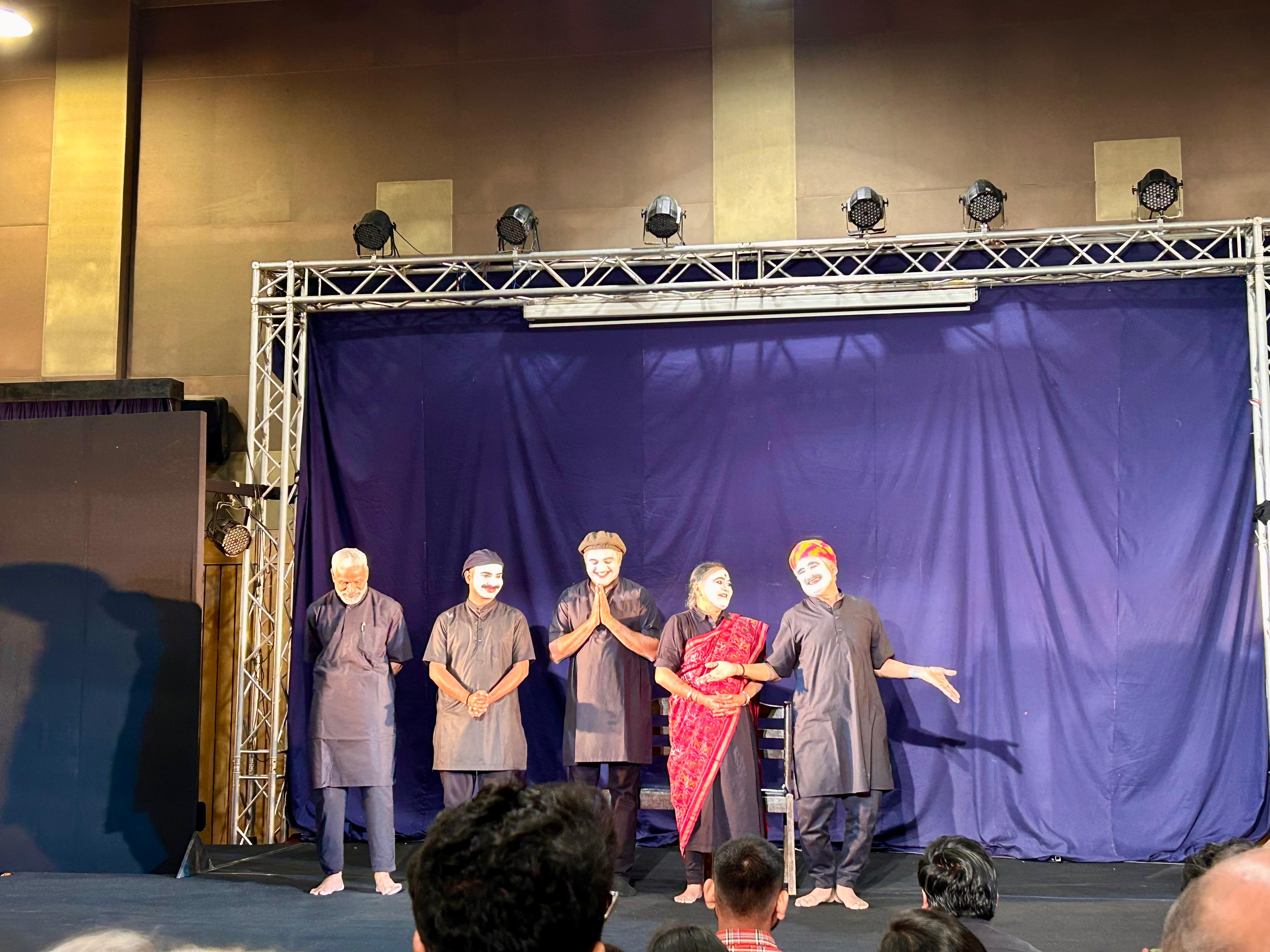The Kala Ghoda Art Festival ( Kala ka Kumbh): A Silver Jubilee Celebration of Artistic Brilliance
- Vilas Janve

The much-awaited Kala Ghoda Art Festival in Mumbai has been a highlight for Mumbaikars, and this year, the 25th edition, marking its silver jubilee, was nothing short of a joyous occasion for me. From January 25th to February 2nd, the festival felt like a vibrant carnival of art, and I was thrilled to be a part of it. The opportunity to witness this grand artistic congregation firsthand was an exhilarating experience that still lingers in my mind.
The event’s allure was further amplified by our performance of Mime, which was the perfect opportunity for us to be a part of this festivity. On the afternoon of India’s 76th Republic Day, our Mimes were staged at the Rangaswar Auditorium in Yashwantrao Chavan Centre, Mumbai. It was a memorable performance for both the audience and us, leaving a lasting impression.

The Martand Foundation from Udaipur had five of its talented artists perform five distinct Mime pieces for fifty minutes. The audience showered us with immense love and appreciation. Over the next two days, January 26th and 27th, I was able to immerse myself in the many activities the Kala Ghoda Art Festival had to offer, from morning until late evening.
This festival, much like the vast branches of a tree, offered something for every artistic soul: literature, music, dance, theatre, crafts, visual arts, food, heritage walks, lifestyle workshops, cinema, urban architecture, design, street performances, children’s activities, stand-up comedy, and even impromptu dances. Whether traditional or contemporary, every form of art had its space, allowing attendees to savor them at their leisure. A booklet of 90 pages in eight-point font described the various festival activities briefly, catering to the myriad interests of art enthusiasts.

The festival ingeniously involved nearby galleries, cultural and educational institutions, museums, cinema halls, and even historic buildings in the artistic experience. The main festival venue, nestled amidst trees near the Kala Ghoda statue, was meticulously designed by creative designers, providing an aesthetically pleasing environment.
One of the major highlights was the display of horses—art pieces in the form of horses—each more unique than the last. These stunning creations, crafted with patience and precision, were made using various materials such as metal, colorful fabric, threads, worn-out tools, and even discarded plastic bottles and containers. The beauty and creativity behind these sculptures were reflected in the many mobile cameras that captured these masterpieces, sharing their magic with the world.
Artisans from across the country presented an array of crafts including jewelry, home décor, textiles, metalwork, pottery, and more. Prices were high, but the satisfaction of both the creators and buyers far outweighed the costs. For professional photographers, the Kala Ghoda Festival was truly a feast for the lens.

While craft, cuisine, and culture often converge at such fairs, this festival stood out for one key element: care. Yes, care in planning, in the selection of activities, and in the flawless execution of the event—this was the secret to its success. The initiative by Deepali Agarwal of India Exim Bank and the dedicated efforts of Malathi Kembhavi, Varsha Karale, and the entire festival team were visible in every aspect of the event.
The festival also saw the involvement of major government institutions like India Exim Bank, as well as industrial and business entities. The Brihanmumbai administration played a crucial role, with the police department not only ensuring security but also participating in the event with a theatrical performance by their department’s artists.
Theatrical Highlights:
On January 26th, I had the privilege to witness several remarkable performances. In the morning, the solo Marathi play “Sangte Aika” by Mansi Joshi was staged. The afternoon saw the powerful one-act play “Wah, I’m Savitri Phule” by Nandita Patkar, and in the evening, Vidyadhar Gokhale Sangeet Natya Pratishthan s three-hour musical drama “Bawankhani”. On January 27th, a profound Marathi play “Ek Ek Pan Galyavya” was presented by the Police Kalyan Kendra artists, followed by a remarkable performance “Mumbai Ki Jaladhara” by the Living Water Museum in the evening. The play offered an immersive experience of Mumbai’s water related heritage in Dastangoi format by Palash Chaturvedi and his team. The careful selection of such fine performances by organizers Ravi Mishra and Bhavik Shah reflected their commitment to quality.
The festival was a true reflection of the adage in Marathi: “Shita Varun Bhata Chi Pariksha” . In just two days, I got a glimpse of the festival’s immense scale and diversity.
The Kala Ghoda Art Festival also inspired me to share the story of Chetak, the legendary horse of Mewar, in an effort to celebrate the heritage of Mewar. Perhaps, in the next edition of the festival, I will have the opportunity to do so.
साभार :
© CopyRight Pressnote.in | A Avid Web Solutions Venture.






